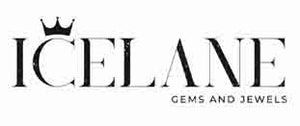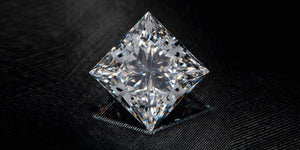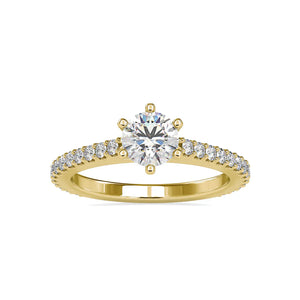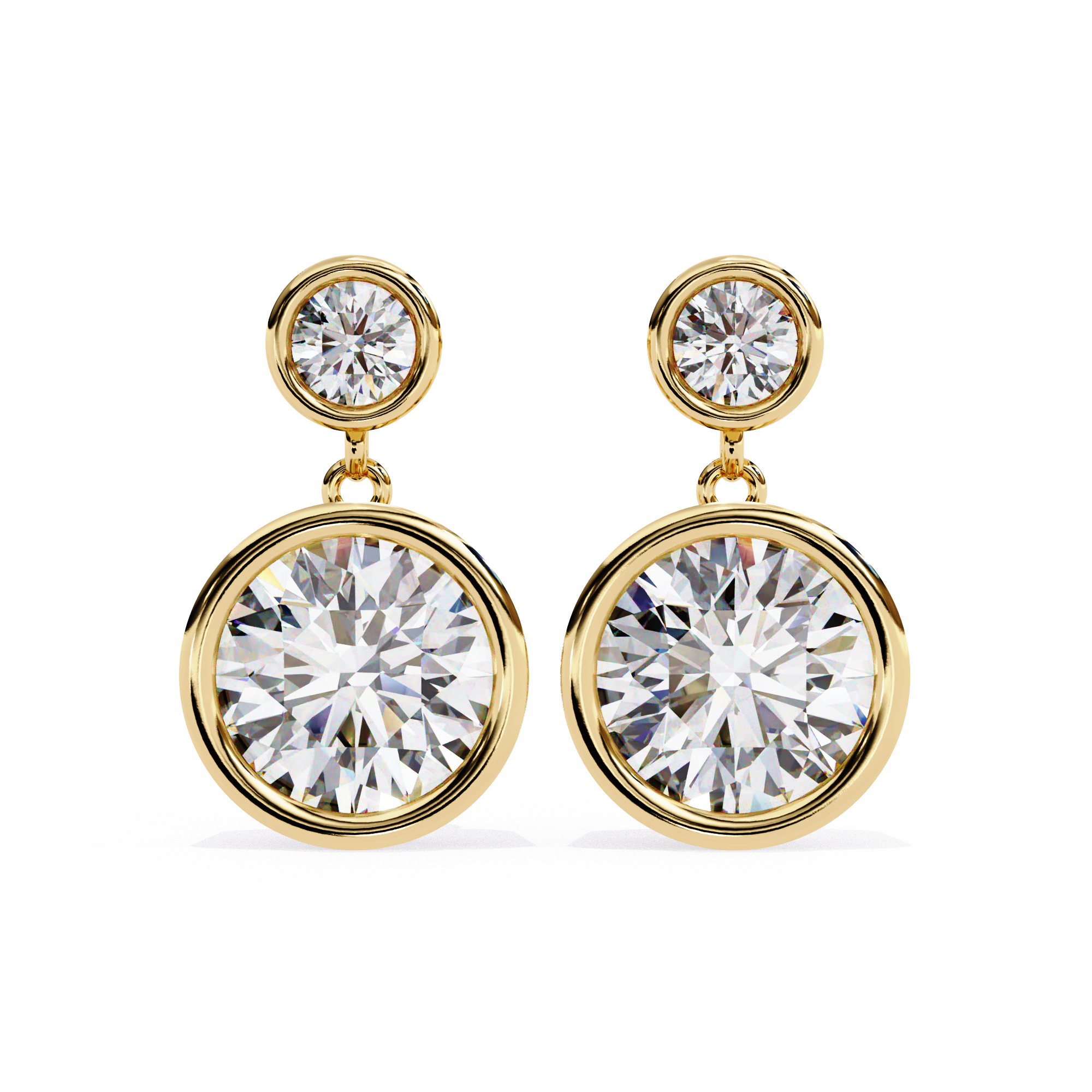Diamonds have always stood for beauty that lasts and deep feelings. A diamond is more than just a beautiful stone; it stands for love, strength, and eternity. This is true whether it's an engagement ring, a wedding band, or a gift you love.
But with the rise of modern technology, a new question has emerged: Is your diamond natural or lab-grown?
At first glance, the two types of diamonds look the same. They have the same shine, clarity, and hardness. But their origins and how they were made are very different, and that difference affects how valuable, rare, and well-known they are.
This guide will help you figure out if a diamond is natural or lab-grown, what makes them different, and what to keep in mind when you buy a diamond from a reputable store like IceLane, which sells both natural and lab-grown diamonds with full authenticity and certification.
1. The Core Difference Between Natural and Lab-Grown Diamonds
Over billions of years, natural diamonds form deep inside the Earth. These rare gems are made when carbon atoms crystallize under a lot of heat and pressure. Each one is a unique work of nature that has been shaped over thousands of years and brought to the surface by volcanic activity.
On the other hand, lab-grown diamonds are made using cutting-edge technology that mimics those same natural conditions. In labs, scientists use methods like HPHT (High Pressure High Temperature) or CVD (Chemical Vapor Deposition) to make diamonds.
What happened? A diamond that is chemically, physically, and optically the same as a natural diamond. Both are made of 100% carbon. The only real difference is where they come from: one comes from below the Earth's surface, and the other comes from a lab.
2. Why It’s Important to Know the Difference
Value in terms of feelings
For many people, natural diamonds have emotional and historical value because they are a part of the Earth's history that has lasted billions of years. They stand for legacy and tradition.
Lab-grown diamonds are just as beautiful, but they stand for progress and sustainability. They are the choice of a new generation that values conscious luxury: beauty without compromise.
Value in Money and Resale
Natural diamonds are hard to find, which makes them valuable over time. People often think they are a good investment because they are always in demand and people still think they are valuable.
Because they can be made in controlled environments, lab-grown diamonds are cheaper. But their resale value is usually lower because technology makes them easier to find and less rare.
There is a place for both options; what matters most is which one you value more: rarity or newness.
3. How to Identify Whether a Diamond Is Natural or Lab-Grown
It can be hard to tell the difference between a natural diamond and a lab-grown diamond just by looking at them. Even jewelers who have been doing it for a long time often use special tools and gemological tests. But there are a few reliable signs and methods you can use.
Check the Certificate
A reputable lab like GIA (Gemological Institute of America), IGI (International Gemological Institute), or HRD should give you a grading report for every real diamond.
These certificates make it clear if the diamond was grown in a lab or naturally. The report should have words like "Laboratory-Grown Diamond," "Man-Made Diamond," or "Created Diamond."
IceLane sells every diamond, whether it was mined or grown in a lab, with a real certificate that clearly states where it came from. This makes sure that you know everything about your purchase and can trust it.
Laser Writing on the Girdle
A lot of certified diamonds have a microscopic laser inscription on their girdle, which is the thin edge of the stone. The certificate number and, in some cases, the type of diamond, like "LAB GROWN" or "NATURAL," are included in this engraving.
A jeweler's loupe or a microscope can help you see this writing. If you're buying from a well-known brand, they'll be happy to show you this information before you buy.
What is included and how it grows
- Gemologists frequently analyze a diamond's internal structure to ascertain its provenance.
- Natural diamonds often have small inclusions, like minerals or tiny crystals, that formed over time.
- Diamonds grown in a lab may have metallic inclusions or growth patterns that are different from those of natural diamonds.
To find these small differences, scientists use special tools like UV fluorescence and spectroscopy. Some lab-grown diamonds may glow orange or yellow under UV light, while natural diamonds may glow blue.
Differences in Price
If two diamonds look exactly the same but cost a lot more, that's a big sign. Lab-grown diamonds are usually 40–70% cheaper than natural diamonds of the same size, color, and clarity.
That doesn't mean one is worse than the other; both are real diamonds. The price difference is just because they are rare and cost a lot to make. It takes billions of years for a natural diamond to form, but it only takes a few weeks for a lab-grown diamond to form.
The Importance of a Trusted Jeweler
Trusting your jeweler is the easiest way to find out what you're buying. A brand that is open and well-known will always tell you if a diamond is natural or lab-grown, give you a certificate, and make the difference clear.
IceLane gives customers all the information they need and expert advice, whether they're buying a classic natural diamond or a more environmentally friendly lab-grown diamond.
Read also: Lab Grown Diamond Jewellery in Udaipur
4. Quick Checklist for Diamond Buyers
- Check this list before you buy any diamonds:
- Is there a GIA, IGI, or HRD certification with the diamond?
- Does the certificate say if it's "Natural" or "Lab-Grown"?
- Is there a laser engraving that can be seen on the girdle?
- Did your jeweler tell you where the diamond came from and how it grew (HPHT or CVD)?
- Is the price much lower than you thought it would be for its size and quality?
- Have you checked the jeweler or brand's reputation and authenticity?
5. Comparing Natural and Lab-Grown Diamonds
|
Feature |
Natural Diamond |
Lab-Grown Diamond |
|
Origin |
Formed naturally deep within Earth over billions of years |
Created in a laboratory using advanced technology |
|
Composition |
100% carbon |
100% carbon |
|
Rarity |
Extremely rare and limited |
Can be produced in large quantities |
|
Price |
Higher due to rarity |
40–70% more affordable |
|
Appearance |
Identical to lab-grown |
Identical to natural |
|
Environmental Impact |
Mining has ecological impact |
More sustainable and ethical |
|
Resale Value |
Higher resale potential |
Lower resale potential |
|
Symbolism |
Legacy, tradition, and heritage |
Modernity, sustainability, and innovation |
Both choices are appealing. People love natural diamonds because they are rare and have a long history. People love lab-grown diamonds because they are cheap and made in a way that is good for the environment.
6. Choosing What’s Right for You
What you value most will ultimately determine your choice.
A natural diamond might be the best choice for you if you like the idea of owning something that the Earth made over billions of years—something one-of-a-kind and long-lasting. It has a story that goes beyond time and is still a strong symbol of everlasting love.
If you want something more modern that balances beauty, ethics, and price, a lab-grown diamond is a great choice. You get the same shine, sparkle, and strength for a lower price.
IceLane has both options, and they are all certified, free of conflict, and made to the highest standards of quality and craftsmanship.
7. Final Thoughts
What really matters about a diamond is its authenticity, quality, and meaning, not whether it was grown in a lab or naturally. Both are real diamonds, and they both shine beautifully. They both belong in today's world of fine jewelry.
Knowing the difference lets you make a smart, sure choice that fits with your values and your vision.
At IceLane, every diamond, whether it was made in a lab or found in nature, goes through strict quality checks and comes with full certification. We think that every customer should have clarity, trust, and brilliance that lasts a lifetime.
So, when you pick out your next diamond, keep in mind that brilliance isn't just about how shiny it is; it's also about knowing where it came from and why it matters.




